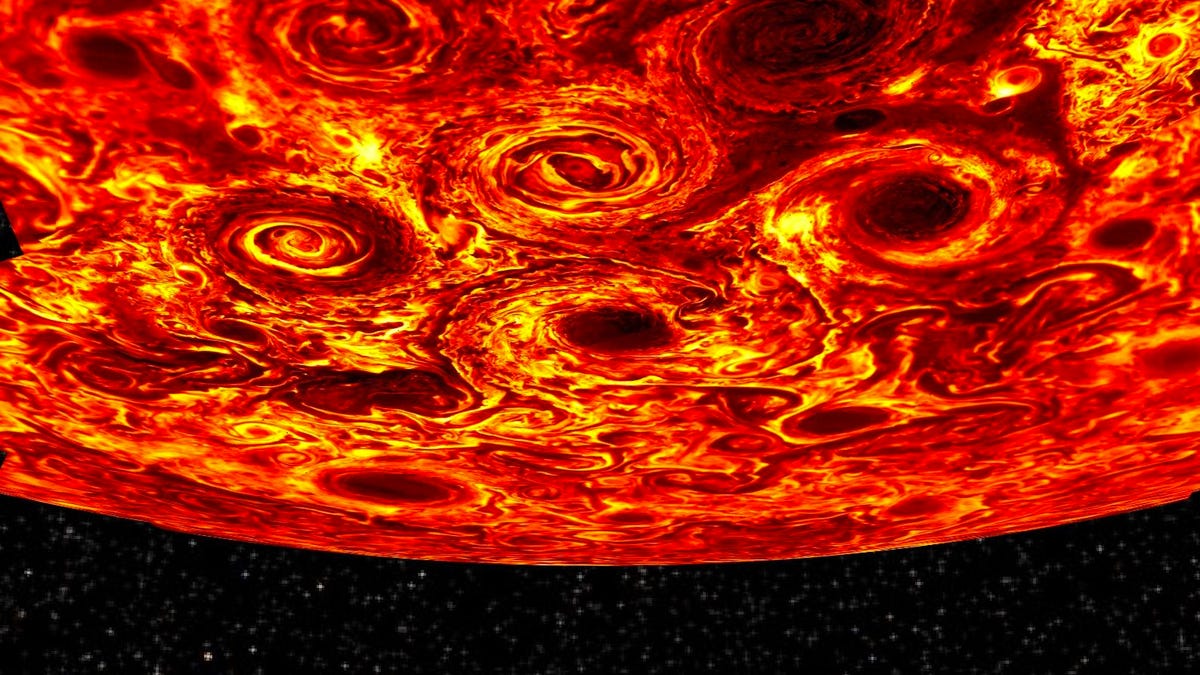NASA spies fierce cyclone dance on Jupiter
The Juno spacecraft has spotted another oddity on the planet best known for its Great Red Spot: hurricanes circling each of the gas giant's poles.

A mosaic of infrared images from Jupiter's South Pole shows the persistent hurricanes.
Both the top and bottom of our solar system's largest planet host what resembles a nonstop swirl of violent hurricanes, we learned Wednesday.
We already knew Jupiter is a tumultuous place, but new research to be published in Thursday's edition of the journal Nature shows the gas giant's poles are particularly turbulent, with several cyclones circling one huge central storm at each pole.
NASA's Juno spacecraft has been orbiting Jupiter since July 2016 and has provided some of the first clear views of the planet's poles. Using time-lapse imagery from the craft's passes over the poles, an international team of researchers led by Alberto Adriani from Italy's National Institute for Astrophysics found that eight circumpolar cyclones rotate around a single cyclone at the north pole, while the south polar cyclone is circled by five such cyclones.
The research is one of four new papers on Jupiter set to be published Thursday that use Juno data to try and better understand the huge planet, which still holds many mysteries beneath and within its dense atmosphere.
The twirling waltz of Jovian hurricanes is reminiscent of the bizarre hexagonal weather pattern at Saturn's north pole, but also distinctive in its own right. Each of the 15 storms appear to persist independently without merging for reasons that remain unknown.
"The configuration of the cyclones is without precedent on other planets," the researchers write. "What was unexpected is their stable appearance, close clustering and symmetry around each of the poles."
Of course, the total observation period of Jupiter's poles only spans about seven months, so it's certainly possible the cyclone pattern could change in the future, hopefully while Juno is able to capture it.
But even if the storms fade, it's probably still a part of the solar system best observed very, very far away from Jupiter's crushing gravity and who knows what else.
Crowd Control: A crowdsourced science fiction novel written by CNET readers.
Star Wars at 40: Join us in celebrating the many ways the Force-filled sci-fi saga has impacted our lives.

